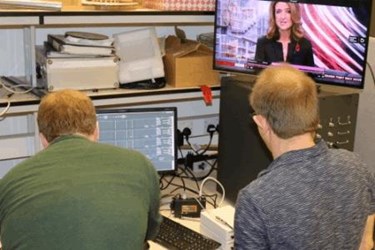Spatially Adaptive Digital TV Broadcast System Saves Power, Cuts Carbon Emissions
By Jof Enriquez,
Follow me on Twitter @jofenriq

Engineers at the University of Bristol have delivered a proof of concept showing how a spatially adaptive broadcast system can realize reductions in digital broadcast power of up to 35 percent, which in turn can cut carbon emissions and overall broadcasting costs.
"Digital broadcasting is more energy efficient than analogue broadcasting, and following digital switch over, digital broadcast towers now use less electricity than their analogue equivalents," said Dr. Peter Bagot, Research Associate in the Department of Electrical and Electronic Engineering, at the university. "Our work is about exploiting the benefits of digital broadcast TV to deliver improved energy efficiency."
Unlike analogue broadcasting, digital TV broadcast must operate above a hard threshold point to transmit signals; if the power falls below that limit, then no picture can be seen by the viewer at all. Because the actual power received tends to fluctuate above or below the threshold, the network engineer assumes the worst-case scenario and tries to set the broadcast power above the threshold. However, increasing the power above the limit will not benefit the user further, and entails more costs for the broadcaster.
Nevertheless, if the engineer could tap into a feedback system consisting of Internet-enabled TV devices from the viewer's premises, then he could optimize the signal strength and direction of the transmission in real time, according to viewing conditions.
This spatially adaptive broadcast system could result in significant energy savings, according to Bagot and colleagues, who utilized a channel emulator to physically model array gain and fading conditions, and created feedback nodes to manipulate broadcast powers based on user feedback. Testing was performed at the University's Communication Systems and Networks (CSN) Group that runs a state-of-the-art hardware and measurement facility.
"The hardware-in-the-loop laboratory demonstration using our Keysight F8 channel emulators, funded through Bristol’s EPSRC experimental equipment grant, provides an excellent proof of concept for this energy efficient technology," said Professor Andrew Nix, Dean of Engineering and head of the CSN research group.
Bagot, Nix and co-authors Mark Beach, Joe McGeehan, and John Boyer, wrote of their findings in the May 9 issue of IEEE Transactions on Broadcasting: "The effects of such a system on the U.K. Digital terrestrial television (DTT) network were evaluated and the advantages highlighted potential power savings of up to 2.1 dB being obtainable. This equates to an electricity reduction of between 33 million and 58 million kWh per year, saving between £3.5 million and £6.1 million and reducing carbon emissions by between 13.7 million and 24 million CO₂e."
